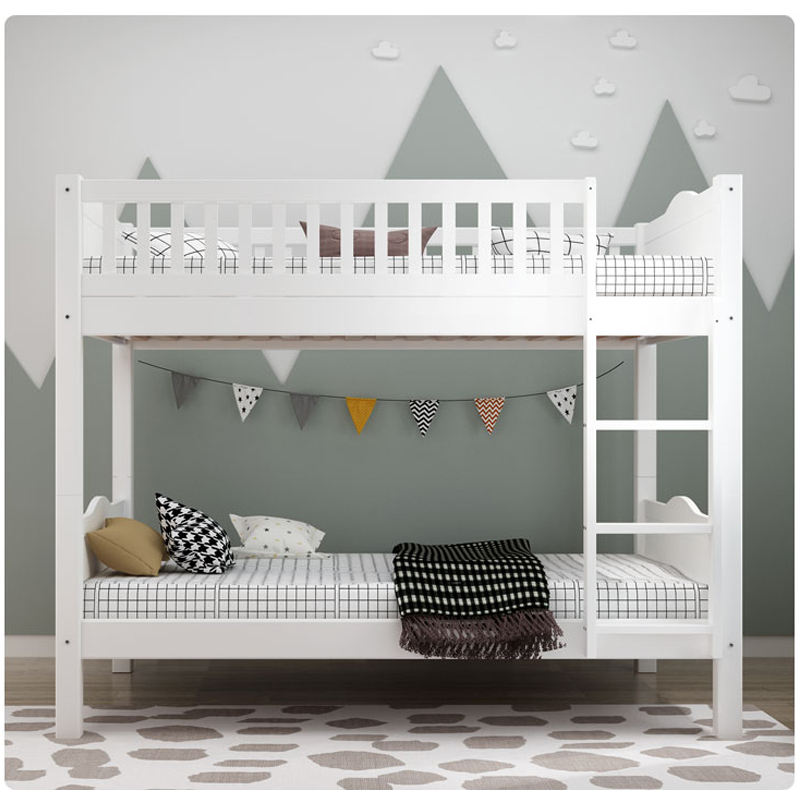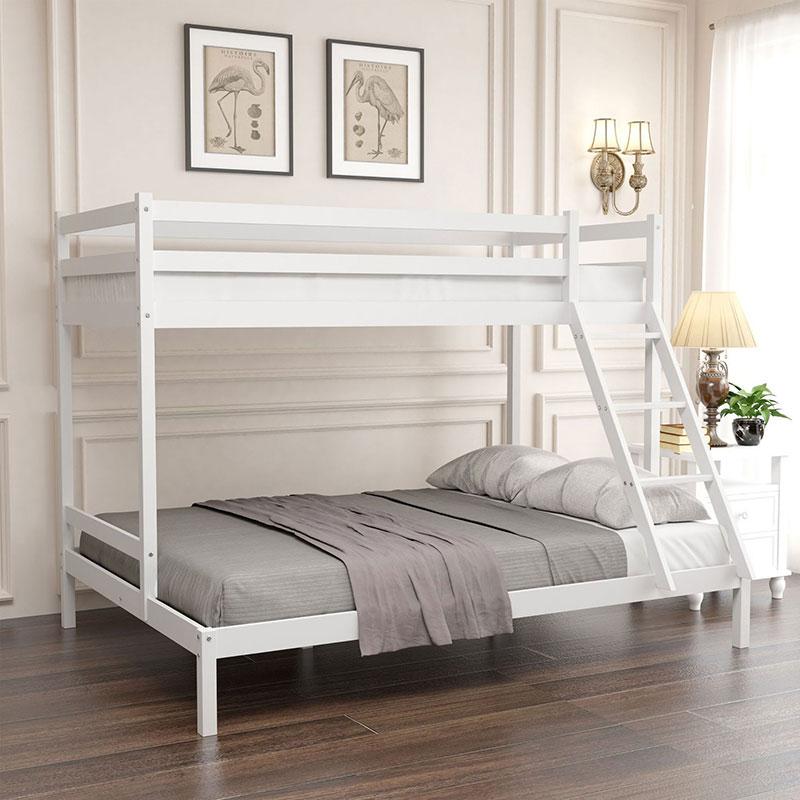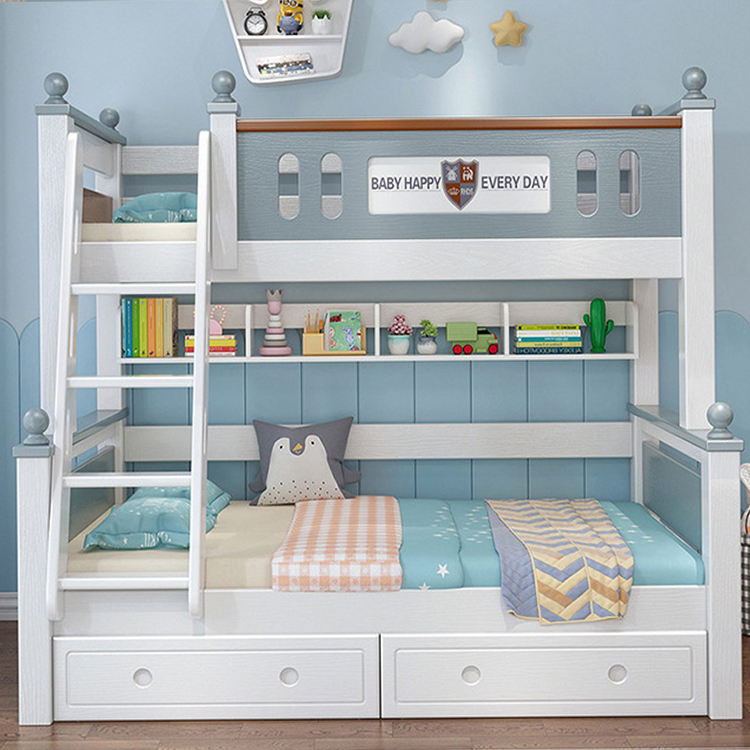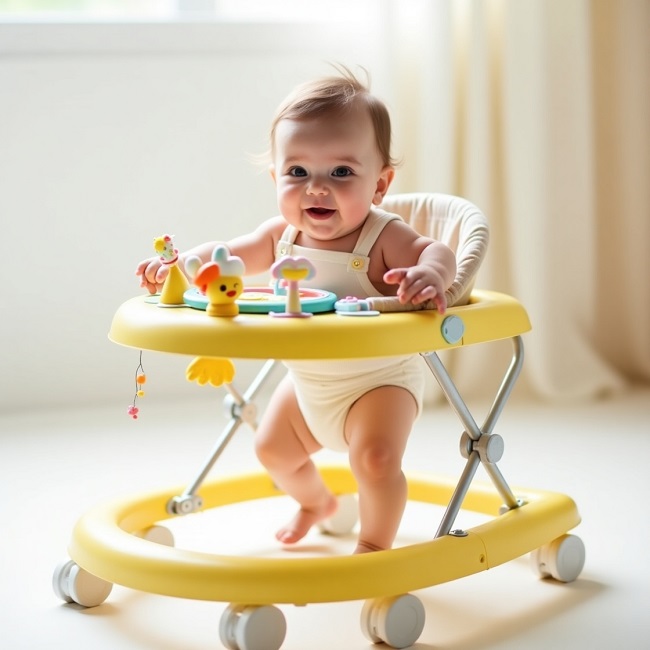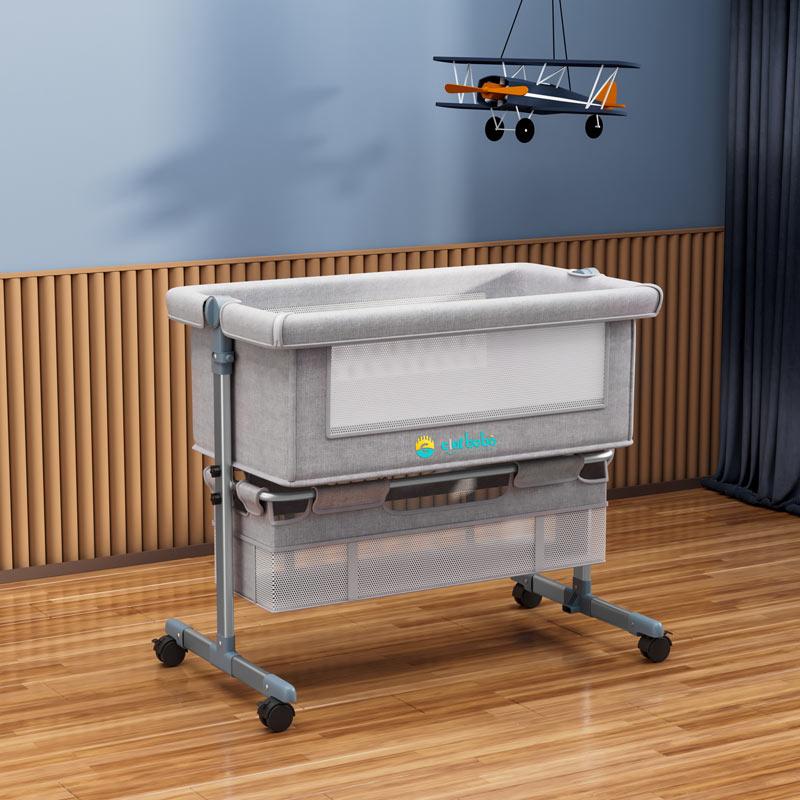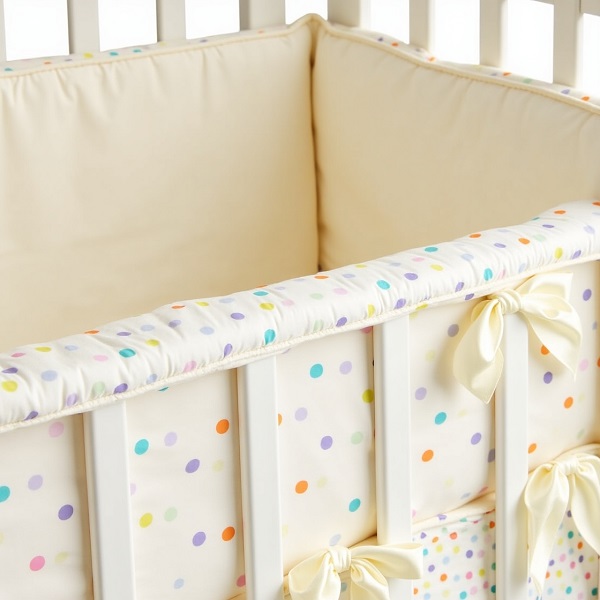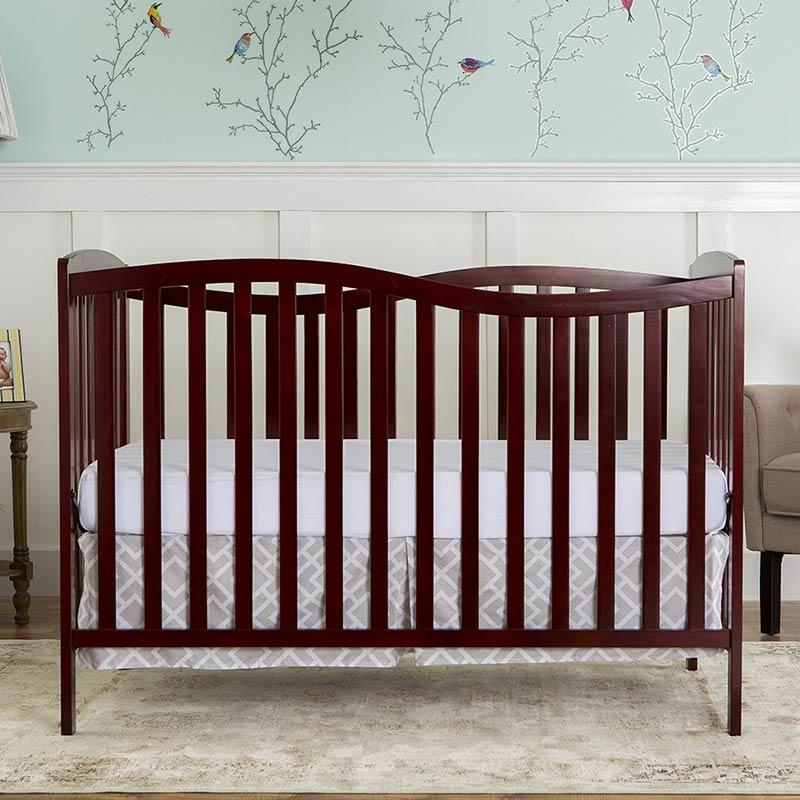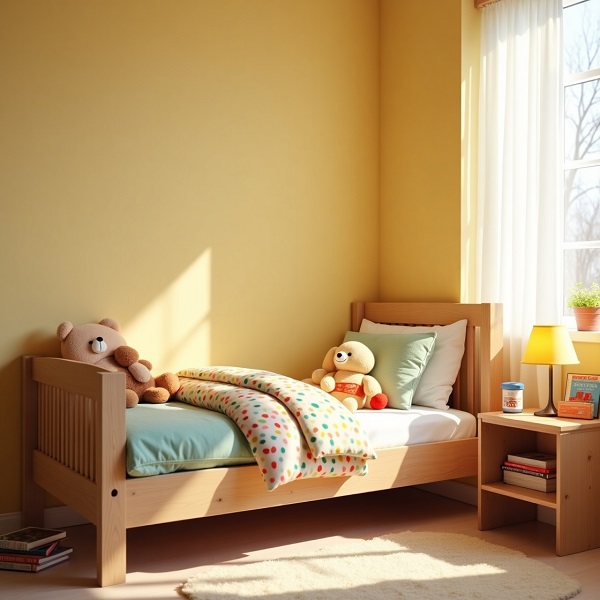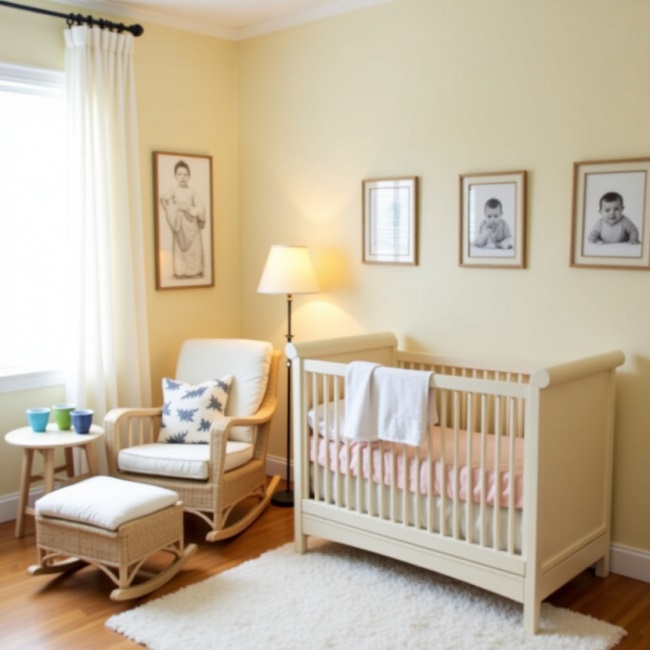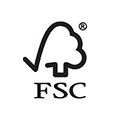Beliches são uma solução prática para economizar espaço em quartos compartilhados para crianças, dormitórios e casas de férias. No entanto, apesar da popularidade, ainda existem preocupações com a segurança.
Ao contrário das camas padrão, os beliches apresentam riscos específicos: quedas de altura, aprisionamento em grades de proteção ou até mesmo desabamentos estruturais devido à montagem inadequada.
Isso levanta uma questão crítica: beliches são inerentemente inseguros ou os riscos podem ser minimizados com precauções adequadas?
Continue lendo para descobrir se beliches são a escolha certa para sua família — e como prevenir acidentes antes que eles aconteçam. De grades de proteção a alturas de colchão, recomendações de idade a certificações de segurança, daremos a você um guia claro e prático para tomar uma decisão informada.
Beliches são seguros para crianças pequenas?
Sim, bem projetado beliches para crianças pode ser seguro — quando usado corretamente.
No entanto, as diretrizes de segurança das autoridades de segurança infantil e de regulação do consumidor afirmam claramente que apenas crianças com 6 anos ou mais devem dormir na cama de cima. Crianças menores de 6 anos não estão em condições de desenvolvimento para subir escadas com segurança ou lidar com a altura de um espaço elevado para dormir.
Dito isso, a cama de baixo de um beliche é geralmente considerada segura para crianças pequenas, desde que medidas básicas de segurança sejam seguidas. Por ser próxima ao chão, elimina o risco de acidentes ao escalar e reduz a chance de ferimentos em caso de queda.
Na verdade, o beliche inferior pode funcionar como um cama infantil normal. Para maior proteção, instalar grades de proteção pode ajudar a evitar que seu filho role para fora durante o sono, principalmente se ele estiver saindo do berço.
Alguns pais preferem beliches no estilo Montessori, onde a cama inferior é projetada para ficar quase nivelada com o chão. Esses designs incentivam a independência e reduzem ainda mais o risco de lesões, tornando-os uma excelente opção para crianças menores.
Beliches são seguros para adultos?
Sim, beliches são seguros para adultos. Ainda mais porque a maioria dos adultos consegue subir e descer com segurança de ambos os beliches.
Dito isso, é essencial escolher beliches de qualidade que sejam projetados e construídos para suportar o peso de adultos. Um bom design aqui se refere tanto à ótima estética quanto às disposições de segurança adequadas. Os recursos de segurança recomendados para beliches adultos incluem grades de proteção e uma escada estável. (Mais sobre isso abaixo)
Uma construção de qualidade, por outro lado, é um beliche feito de materiais resistentes que podem suportar o peso de adultos. Felizmente, a maioria dos fabricantes de beliches para adultos testa seus designs e indica o peso máximo que diferentes modelos podem suportar. Aderir aos limites indicados torna os beliches seguros para adultos porque suas estruturas não são comprometidas por muito peso.
Além disso, escolher um beliche com dimensões adequadas garante um sono confortável e minimiza o risco de cair de qualquer um dos beliches.
Por exemplo, beliches de solteiro podem ser adequados para um adulto de peso e altura médios. Em comparação, beliches de solteiro sobre beliches de casal têm um beliche inferior que é maior do que o superior; beliches de casal podem ser uma opção melhor para adultos que precisam de mais espaço.
Beliches triplos são seguros?
Sim, beliches triplos são seguros quando projetados e usados corretamente. No entanto, eles representam um risco maior em comparação aos beliches duplos devido à sua altura maior.
Alguns dos riscos ou preocupações associados aos beliches triplos incluem:
Quedas: um beliche triplo tem uma altura significativamente alta em relação ao chão. O risco de cair do beliche de cima, portanto, representa um risco mais grave devido à distância entre o chão e o beliche.
Estabilidade: qualquer estrutura alta é tipicamente mais difícil de equilibrar em comparação a uma mais baixa. Problemas de estabilidade são, portanto, mais prováveis de ocorrer em beliches triplos em comparação a beliches simples e duplos. Um bom design e uma montagem adequada podem, no entanto, eliminar esse risco.
Proximidade de tetos: a altura de um beliche triplo pode às vezes chegar perto do teto. Isso pode resultar em ferimentos na cabeça ou no pescoço se não houver espaço suficiente entre o beliche de cima e o teto para a pessoa na cama sentar-se confortavelmente.
Ainda assim, escolher um beliche triplo estável e bem projetado pode ser bastante seguro e oferecer alguns benefícios. Especialmente se você precisa criar vários espaços para dormir em uma sala com espaço limitado.
Quanto peso um beliche pode suportar?
Um beliche duplo para adultos deve ser capaz de suportar mais peso em comparação a um beliche duplo para crianças. É por isso que os beliches são diferenciados com base em seus usuários-alvo, ou seja, crianças pequenas, adolescentes ou adultos.
Os fabricantes testam ainda mais e indicam os pesos específicos que seus beliches podem suportar com base em outros fatores, como os materiais do beliche. Beliches de metal, por exemplo, geralmente podem suportar mais peso do que os de madeira úmida.
No entanto, da mesma forma que os tamanhos de beliches são razoavelmente padronizados, também é possível estimar suas capacidades de peso. Aqui estão algumas estimativas gerais de peso para diferentes tipos de beliches.
Um beliche duplo padrão
Os limites de peso geralmente variam entre 150 a 200 libras (68 a 90 kg). No entanto, se o beliche for projetado para adultos, isso pode ir mais alto, para uma faixa entre 250 a 500 libras (90 a 226 kg).
Beliches duplos resistentes
São beliches feitos com materiais de alta densidade, como metal ou beliches projetados para suportar mais peso. Sua capacidade de peso é de cerca de 300 a 500 libras (136 a 226 kg)
Notavelmente, beliches mais baixos geralmente têm um limite de peso maior do que beliches mais altos. Eles são mais estáveis e, estruturalmente, é mais seguro para a parte inferior do beliche carregar mais peso do que a parte superior.
Quais são os padrões de segurança para beliches?
Os padrões de segurança para beliches são bem parecidos. Todos os beliches, por exemplo, devem ter grades de proteção ao longo do beliche superior para evitar quedas. As organizações reguladoras do consumidor, no entanto, diferenciam os padrões de segurança para beliches para crianças pequenas e beliches para adultos.
Beliches para crianças
Guarda-corpos: grades de proteção ao longo de ambos os lados do beliche superior são obrigatórias. Elas devem medir cerca de 5 polegadas mais altas do que o colchão para proteger as crianças de cair.
Bordas suaves: bordas arredondadas minimizam ferimentos por impacto que podem ser comuns se um beliche tiver cantos afiados.
Espaços de guarda-corpo medidos: os espaços entre os guarda-corpos devem ser pequenos para evitar que o pescoço fique preso ou que uma criança escorregue por eles.
Escadas seguras: a escada em um beliche para crianças pequenas deve estar firmemente presa e estável para fornecer acesso ao beliche superior.
Bases de colchão estáveis: a base onde o colchão repousa não deve ceder nem um pouco quando peso ou pressão forem exercidos sobre ela.
Espaço adequado entre os beliches: deve haver espaço suficiente entre a cama de cima e a cama de baixo para permitir que a criança na cama de baixo consiga sentar-se sem bater a cabeça.
Beliches para Adultos
Materiais de qualidade: beliches precisam ser feitos de madeira ou metal resistente e durável, que possam suportar o peso de adultos e permanecer intactos.
Estabilidade: beliches devem permanecer estáveis na montagem e quando sob pressão de peso. Peças como a base do colchão também não devem ceder com a pressão, mas permanecer uniformemente planas.
Guarda-corpos: beliches para adultos exigem grades de proteção ao longo da cama de cima para evitar quedas. Grades de proteção na cama de baixo não são obrigatórias.
Escadas firmes: escadas em beliches de adultos devem ter uma estrutura forte e tamanho adequado para suportar o peso de um adulto. Elas também devem ser estáveis e fáceis de subir.
Especificação de peso: um fabricante de beliches para adultos deve indicar uma capacidade máxima de peso para ambos os beliches para que os usuários possam determinar se eles são ou não ideais para suas necessidades.
Espaçamento adequado entre camas: deve haver espaço suficiente para o ocupante do beliche inferior sentar-se e movimentar-se sem bater a cabeça no beliche superior.
Dicas de segurança para usar beliches
Como pai ou responsável, você pode garantir que os beliches sejam mais seguros para crianças pequenas:
Seguindo as instruções do fabricante: observe e siga as recomendações de idade e peso indicadas para um beliche. Siga cuidadosamente as instruções de montagem fornecidas pelo fabricante também.
Escolhendo o colchão certo: o colchão certo deve ficar plano na base da cama. Ele também não deve ser tão grosso que uma criança fique acima das grades de proteção quando estiver em cima da cama.
Desencorajando o jogo arriscado: ensine seus filhos a brincar longe dos beliches. Cair dos beliches durante a brincadeira é uma das principais causas de acidentes com beliches entre crianças.
Realizar verificações regulares de segurança e manutenção: verificar e avaliar as condições dos beliches para crianças pequenas e fazer reparos ou substituições quando necessário.
Instalando luzes noturnas:as luzes noturnas nos quartos das crianças pequenas garantem que elas possam entrar e sair dos beliches com segurança, mesmo que acordem no meio da noite.
Instalando algumas medidas de segurança de backup: estender um tapete acolchoado ao longo dos beliches para crianças pequenas e posicioná-los contra uma parede de um lado pode tornar o beliche mais seguro para crianças pequenas.
Você também pode criar uma experiência mais segura ao usar beliches para adultos:
Cumprindo os limites de peso: siga os limites definidos pelo fabricante do beliche, não importa o quão resistente o beliche pareça.
Montando beliches corretamente: siga as instruções do fabricante e teste a estabilidade das camas.
Escolhendo o tamanho certo: as dimensões do beliche devem ser adequadas para um adulto e certifique-se de que há espaço suficiente para manobrar com segurança entre os beliches.
Realizar verificações de manutenção regulares: tente desmontar o beliche, inspecionar suas peças e substituir quaisquer peças desgastadas antes de remontá-lo.
Conclusão
Beliches podem ser uma adição segura, divertida e que economiza espaço em sua casa, se usados corretamente. Embora a ideia de dormir em uma posição elevada possa parecer arriscada à primeira vista, a maioria dos acidentes com beliches pode ser evitada com as precauções certas.
Escolher um modelo que atenda aos padrões de segurança atuais, impor o uso adequado à idade (principalmente mantendo crianças menores de 6 anos longe da cama de cima) e adicionar recursos como grades de proteção resistentes e escadas antiderrapantes podem reduzir significativamente os riscos.
É igualmente aconselhável priorizar um bom adulto ou fabricante de beliches para crianças, também; a mão de obra, os testes e as instruções do usuário impactam significativamente a segurança dos seus beliches.
Artigos relacionados recomendados:

